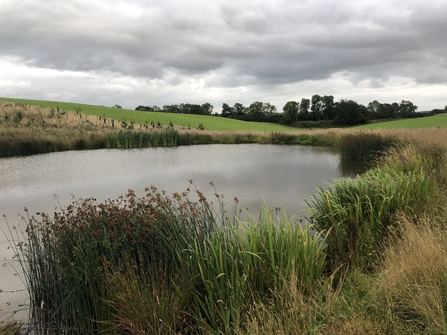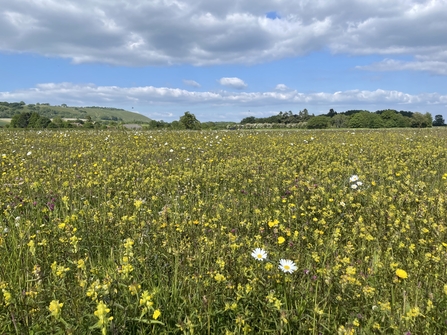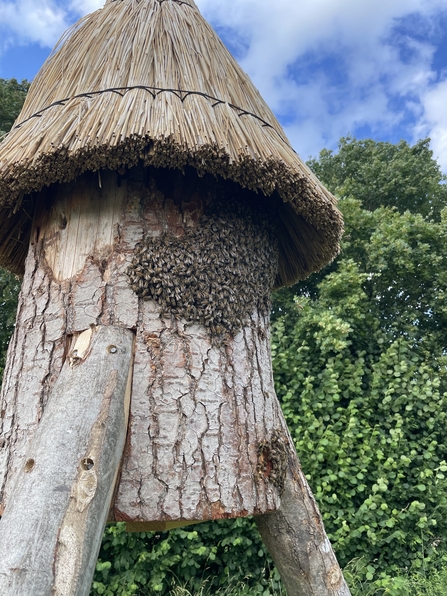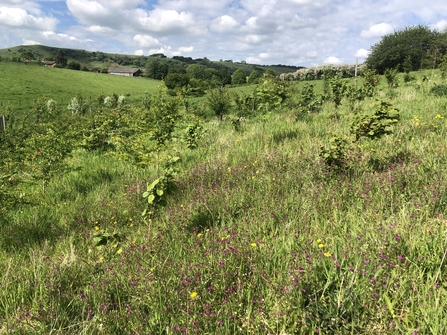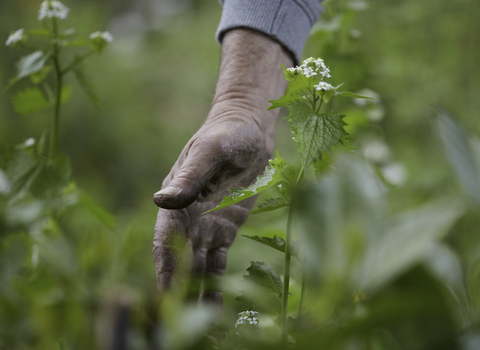Guest blog written by local sheep farmer Sidney Hiscox.
The cry to help our biodiversity in Britain is currently a loud one, and it is wonderful how many people are hearing it, and yet we still find ourselves losing grip on our depleting nature. For the last five years, I have taken a more active role in our farm and I’d like to share some of the joy I have experienced from helping nature on it, in the hope it might inspire others.
In Wiltshire, we have 180 acres that are farmed with sheep (in a 500-acre farm partnership). Imagine a rectangular block, consisting of rolling fields with two shallow valleys. On the northern boundary is a road, on the western and eastern fronts are other farms, and at the bottom is the canal with a beautiful 81-acre nature reserve the other side, made up of wet woodland and meadows.
When we took over the land in 2016 it was all grassland with one wide, grown out hedge, a few infield oaks that show up on a map from 1812, and a 2-acre wood largely made up of swaying poplars. Today 65 acres of it is currently arable and the rest is herbal ley pasture.
The previous farmer had once farmed pigs but for his final few years he hadn’t really touched the land. Long grass grew over the fields and when you walked through it hare and roe deer popped up and bounded away. When we first purchased it, we had an over-enthusiastic farm manager who set about maximising the land for sheep grazing. The farm was re-fenced, the wild grass sprayed off and reseeded and I once found him ripping out a hedge on the western boundary just to replace a perfectly good fence. It wasn’t his fault. Sheep farming as a viable business is touch and go at the best of times and he was only trying to maximise pasture but now I look back in dismay when I think about the habitat taking out like a greensand spring that bubbled out of the land that was diverted into a ditch via a pipe just to add a tiny patch of grass to grazing.
When I started taking a more active role, I loved the outdoors but I was a beginner to what could be done to help nature. However, once you start reading about habitat creation, there is a bottomless cave to explore. Today I often find myself ignoring my day job so I can read a report on conservation grazing or watch a YouTube video titled Top 3 Mistakes When Mulching Fruit Trees.
Before we dive into the different habitats on the farm, there are two confessions I need to make. First, I'm in the fortunate position where others in the farm partnership focus on the sheep and crops, so I can devote my time to habitat creation. I'm by no means a wealth of knowledge on farming, but I like to think I now know a little bit about habitats. Secondly, there is no denying I’m an extremely lucky type of landowner. The farm isn’t my family’s sole source of income and this has allowed me the space to experiment with habitats on land that would otherwise be needed for farming.
It all began with a pond. A seasonal ditch runs the length of one of the shallow valleys and in 2017 we put in a 0.2-acre pond in the middle of it. Being on greensand we had to line the pond which was no small feat and for the first year it looked ornamental with no surrounding plant life. So, we planted a shrubby copse on one side of it and slowly planted the water’s margins and six years later, it is a sight to behold. On a summer’s evening, I will go sit there and bathe in the life that now inhabits it.


